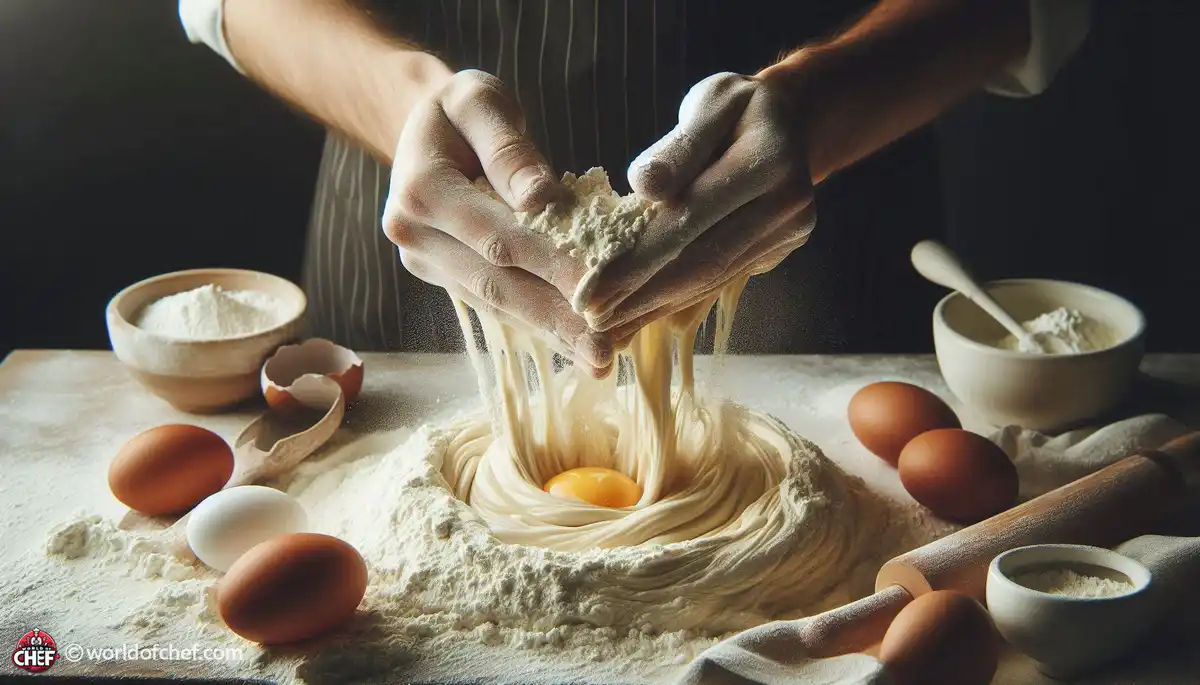
Simmering with Spices: Infusing Flavor into Your Dishes
Emery Donley - Oct 8, 2024 - 8 min read


There exists a folding process that contributes fundamentally to the baking of many products. This helps obtain the perfect texture and consistency in baked goods, but no matter how fragile such products are - be they soufflés or cakes or meringues - it is what happens when you put the ingredients into the batter that differs. Proper folding allows distribution without allowing the mixture to deflate, resulting in your product being light and fluffy.
The first thing is gathering all tools and ingredients before entering into the folding complexities. It incorporates the ingredients lightly by using a big spatula or a flexible silicone spatula without overmixing. Good quality at room temperature ingredients will contribute to smooth and even batter, and dry ingredients should be sifted in such a way that lumps get removed and the elements of flour and cocoa are properly distributed in the batter.
Probably one of the most common mistakes when folding is thinking that it is actually stirring. Stirring is done in a circular motion and may overmix and produce a dense final product; folding is gentle and up-and-over to mix ingredients without losing volume. Folding is really lifting the batter from the bottom of the bowl gently over the top and repeating this process until just combined.
Step with a Light Hand: Light ingredients need to be incorporated lightly. Take a light touch, and add less of the lighter ingredient first and gently fold until a few areas are partially mixed together. This first bit of mixing lightens it a little so that any other lighter ingredients can also be folded in without dropping the batter.
You cannot just throw all the ingredients at once into the mixing bowl. Add them by adding and folding gently and, therefore, control all aspects of the mixing activity for better texture and proper consistency of the batter to end up with. Time will tell when folding must not be rushed. You just have to be careful to not overmix when mixing.
Folding does indeed have one common error and it is overmixing leading to a tough and thick final product. Fold only until just combined and when you do, leave behind some streaks of flour or other dry ingredients because they will continue to dissolve as you mix up your batter during the baking cycle. Trust your instincts and fold when the batter reaches a uniform consistency in texture.
One of the worst problems that can happen in folding ingredients into the batter is deflation. Avert this by being delicate and not stirring or mixing aggressively. Also, see to it that your ingredients are not too cold as cold ingredients can stiffen the batter and lose their volume.
If you find that the folds of your batter aren't mixed well, it is okay. You may go ahead and fold your batter a few more times until it is mixed right by using your spatula very gently, avoiding overmixing. Observe areas containing unmixed ingredients, incorporate them into the batter in light sweeping motions, and adjust the consistency.
Sometimes, folding gives you a batter that turns out too thick or too thin. Do not panic; there are simple solutions to correct the consistency of the batter. To create a thicker batter, all you need to do is add a little extra dry ingredient, such as flour or cocoa powder, and gently fold until it is all incorporated. If your batter is too thin, you can add a little milk or water, folding gently until you reach the right consistency.
Although the basic fold-and-incorporate technique is okay for most baking recipes, there are times when you would want to try other folding techniques and see what interesting results come out of it. Take, for example, the "cut and fold" technique. This is one of the techniques used for folding in whipped cream or beaten egg whites. A slicing motion with the spatula cuts through the mixture, then a gentle folding motion to incorporate the ingredients.
This requires great care, folding in the add-ins like chocolate chips, nuts, or fruit slowly and folding it gently each time you do it, making sure not to mix them too well because, if you mix too well, they are likely to settle at the bottom when baking. Instead, you want to fold them in to distribute throughout the batter for texture and flavor.
Customizing Your Technic To the Recipe Every baking recipe is different and perfecting the fold will depend on how well one adjusts one's technic to each recipe. So, for example, one is using a very thin, light chiffon cake or creating a very thick, chocolatey mousse or developing a fluffy soufflé take time and effort in reading and absorbing the recipe instructions before making. Pay attention to any specific folding techniques or instructions provided by the recipe author, and don't be afraid to experiment and make adjustments as needed.
The art of folding ingredients into batter is a fundamental aspect of baking at home. Basic understanding of folding, practicing proper technique, and experimentation with various methods are some of the key elements of achieving light, airy, and delicious baked goods each time. Just remember to be gentle with the process and not afraid to troubleshoot common mistakes as you move along, and you too will soon become a folding expert in your own kitchen.

Emery Donley - Oct 8, 2024 - 8 min read

Russell Comeaux - Oct 8, 2024 - 8 min read

Walter Backus - Oct 7, 2024 - 8 min read

Samantha Thames - Oct 7, 2024 - 6 min read